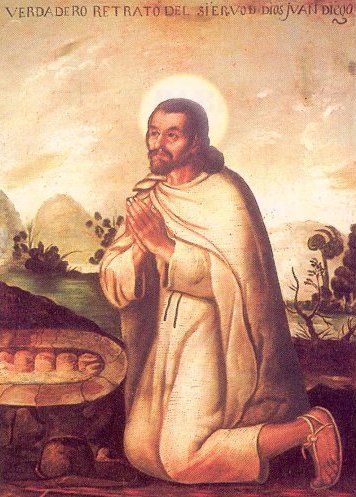Tilmàtli on:
[Wikipedia]
[Google]
[Amazon]



 A ''tilmàtli'' (or ''tilma''; nci, tilmahtli, ) was a type of outer garment worn by men as a
A ''tilmàtli'' (or ''tilma''; nci, tilmahtli, ) was a type of outer garment worn by men as a




 A ''tilmàtli'' (or ''tilma''; nci, tilmahtli, ) was a type of outer garment worn by men as a
A ''tilmàtli'' (or ''tilma''; nci, tilmahtli, ) was a type of outer garment worn by men as a cloak
A cloak is a type of loose garment worn over clothing, mostly but not always as outerwear for outdoor wear, serving the same purpose as an overcoat, protecting the wearer from the weather. It may form part of a uniform. Cloaks have been and a ...
/cape
A cape is a clothing accessory or a sleeveless outer garment which drapes the wearer's back, arms, and chest, and connects at the neck.
History
Capes were common in medieval Europe, especially when combined with a hood in the chaperon. Th ...
, documented from the late Postclassic
In Human history, world history, post-classical history refers to the period from about 500 AD to 1500, roughly corresponding to the European Middle Ages. The period is characterized by the expansion of civilizations geographically and develop ...
and early Colonial eras among the Aztec
The Aztecs () were a Mesoamerican culture that flourished in central Mexico in the post-classic period from 1300 to 1521. The Aztec people included different Indigenous peoples of Mexico, ethnic groups of central Mexico, particularly those g ...
and other peoples of central Mexico
Mexico (Spanish: México), officially the United Mexican States, is a country in the southern portion of North America. It is bordered to the north by the United States; to the south and west by the Pacific Ocean; to the southeast by Guatema ...
.
Styling
The garment was to be worn at the front like a longapron
An apron is a garment that is worn over other clothing to cover the front of the body. The word comes from old French ''napron'' meaning a small piece of cloth, however over time "a napron" became "an apron", through a linguistics process cal ...
, or alternatively draped across the shoulders as a cloak. It was also frequently used as a carry-all.
Significance
Several different types of the garment were in use, designed for the various classes in society. Upper classes wore a tilmàtli ofcotton
Cotton is a soft, fluffy staple fiber that grows in a boll, or protective case, around the seeds of the cotton plants of the genus ''Gossypium'' in the mallow family Malvaceae. The fiber is almost pure cellulose, and can contain minor perce ...
cloth
Textile is an umbrella term that includes various fiber-based materials, including fibers, yarns, filaments, threads, different fabric types, etc. At first, the word "textiles" only referred to woven fabrics. However, weaving is not the ...
knotted over the right shoulder, while the middle class used a tilmàtli made of ayate fibre, a coarse fabric derived from the threads of the maguey Maguey may refer to various American plants:
* Genus '' Agave'', especially
** Species ''Agave americana'', the century plant
** Species ''Agave salmiana
''Agave salmiana'' (also known as ''maguey pulquero'' and green maguey) is a species of the ...
agave
''Agave'' (; ; ) is a genus of monocots native to the hot and arid regions of the Americas and the Caribbean, although some ''Agave'' species are also native to tropical areas of North America, such as Mexico. The genus is primarily known for ...
. It was knotted over the left shoulder. The lower classes knotted the garment behind the neck
The neck is the part of the body on many vertebrates that connects the head with the torso. The neck supports the weight of the head and protects the nerves that carry sensory and motor information from the brain down to the rest of the body. In ...
, where it could serve for carrying.
Miraculous image
A very famous tilmàtli was that worn byJuan Diego
Juan Diego Cuauhtlatoatzin, also known as Juan Diego (; 1474–1548), was a Chichimec peasant and Marian visionary. He is said to have been granted apparitions of the Virgin Mary on four occasions in December 1531: three at the hill of Tepeyac a ...
in 1531; according to tradition, an image of the Virgin Mary
Mary; arc, ܡܪܝܡ, translit=Mariam; ar, مريم, translit=Maryam; grc, Μαρία, translit=María; la, Maria; cop, Ⲙⲁⲣⲓⲁ, translit=Maria was a first-century Jewish woman of Nazareth, the wife of Joseph and the mother o ...
appeared on it in the presence of the bishop
A bishop is an ordained clergy member who is entrusted with a position of authority and oversight in a religious institution.
In Christianity, bishops are normally responsible for the governance of dioceses. The role or office of bishop is ca ...
of Mexico City
Mexico City ( es, link=no, Ciudad de México, ; abbr.: CDMX; Nahuatl: ''Altepetl Mexico'') is the capital and largest city of Mexico, and the most populous city in North America. One of the world's alpha cities, it is located in the Valley o ...
.See Johnston (1981). The image is preserved in the Basilica of Our Lady of Guadalupe
The Basilica of Santa María de Guadalupe, officially called Insigne y Nacional Basílica de Santa María de Guadalupe (in English: Basilica of Our Lady of Guadalupe) is a sanctuary of the Catholic Church, dedicated to the Virgin Mary in her invo ...
which attracts millions of pilgrims annually.
Notes
References
* {{DEFAULTSORT:Tilmatli Aztec clothing Our Lady of Guadalupe